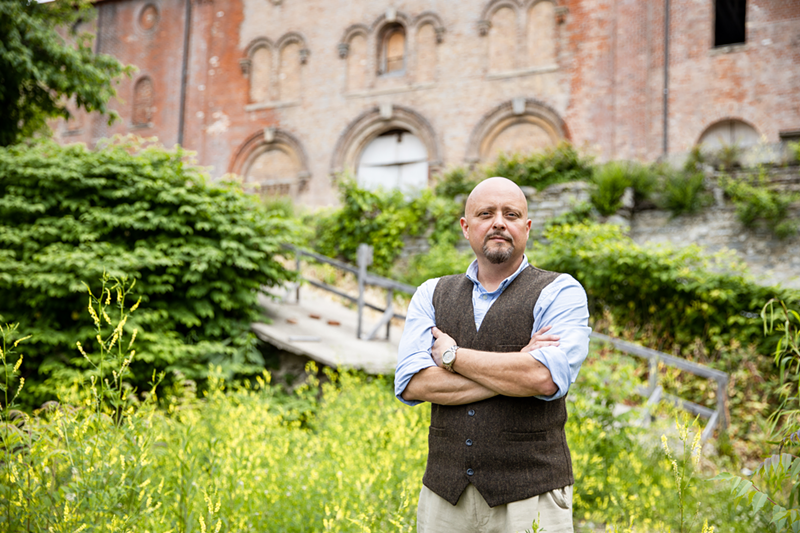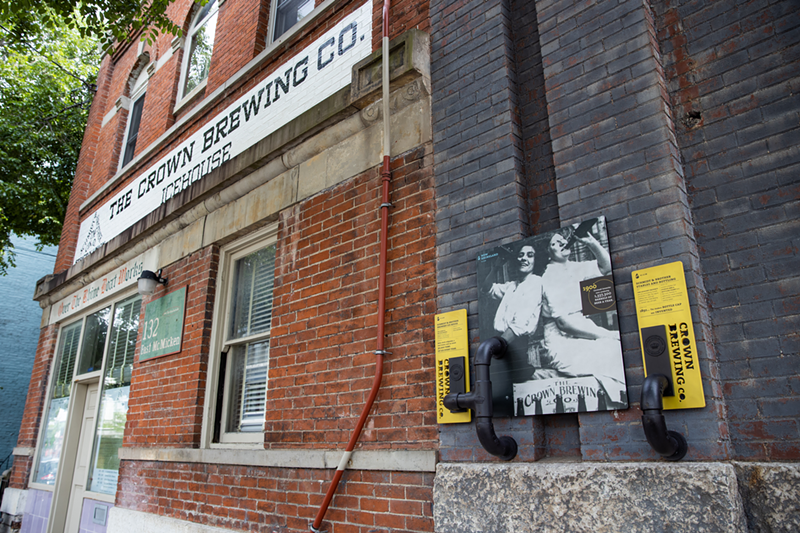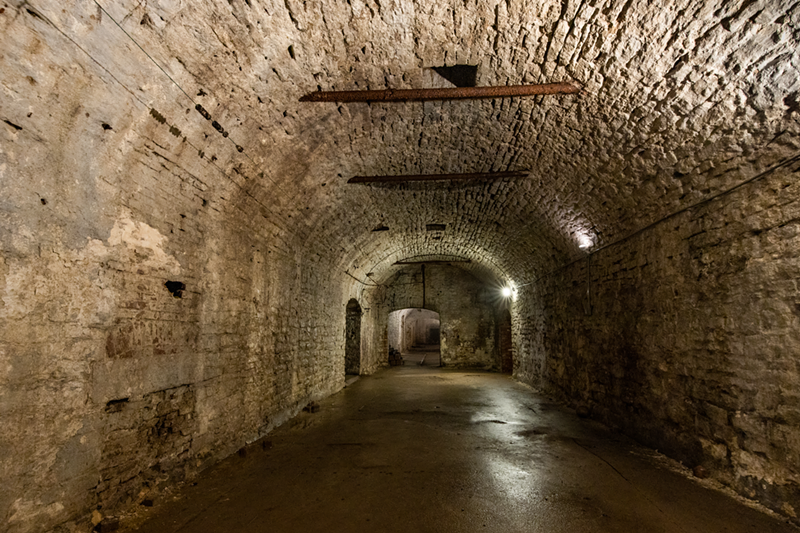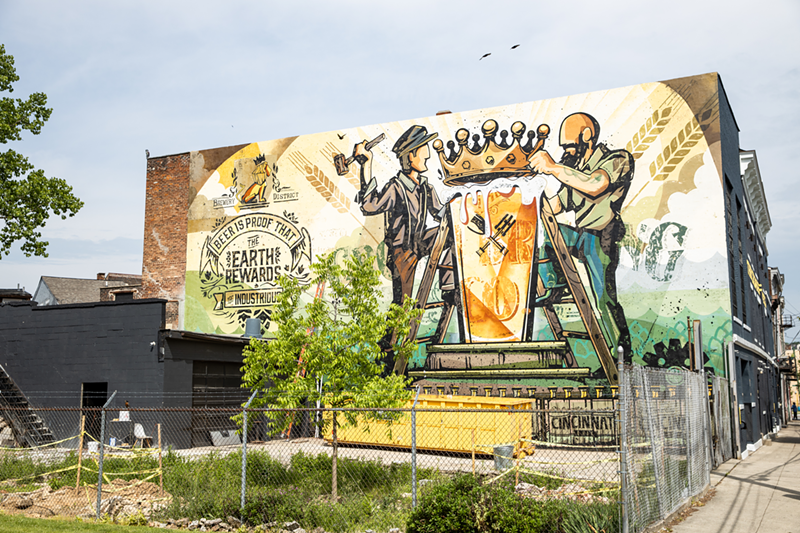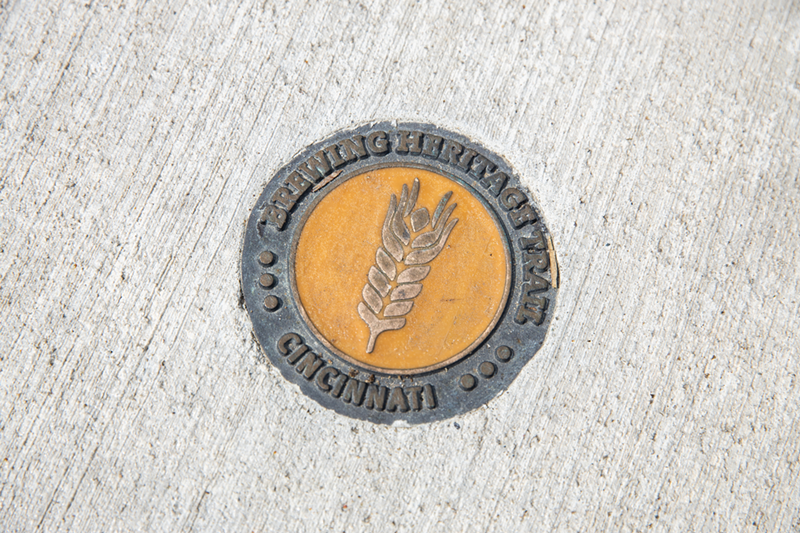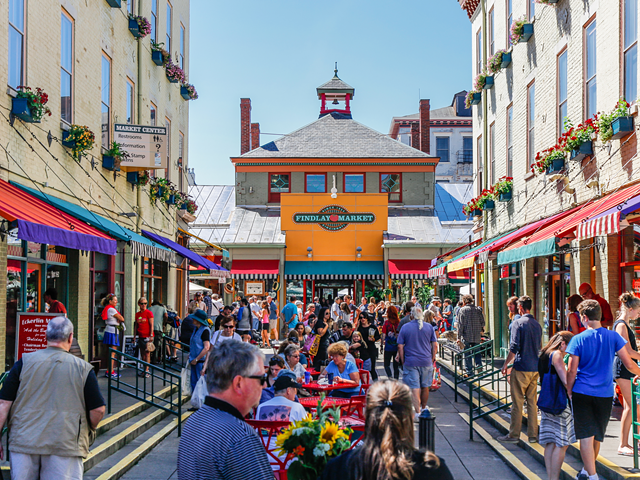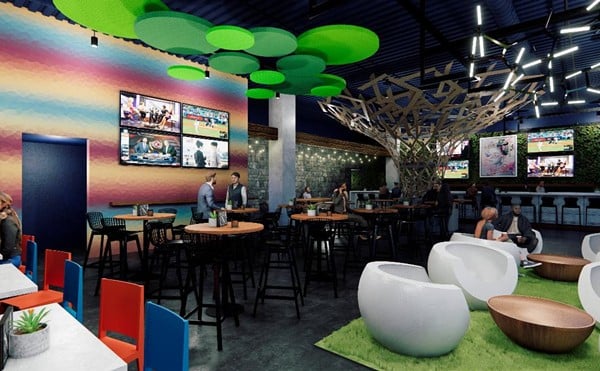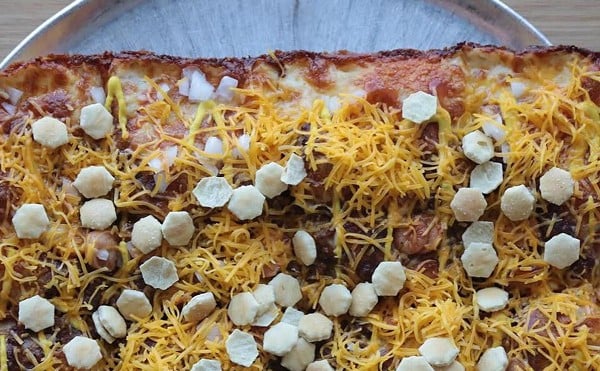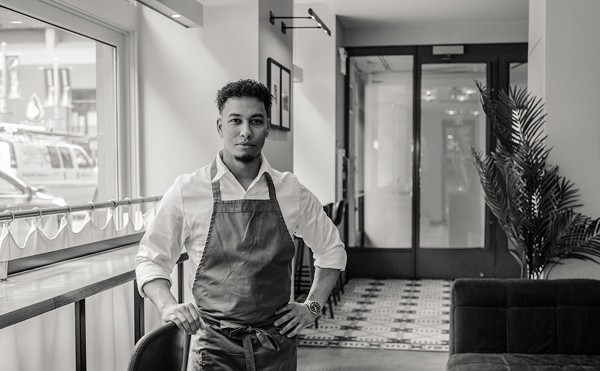Michael D. Morgan is Cincinnati’s resident beer historian and if you’re going to meet him to talk about his newest book over pints of local brew, be sure to eat a large meal beforehand. The man’s thirst is rivaled only by his knowledge.
Cincinnati Beer, published by The History Press, is a historical love letter to the city’s ongoing reputation for producing some of the best beer in the country. The Queen City’s vast population of imbibers should add this new book to their reading list if they ever hope to win at local beer trivia, as Morgan clarifies certain popular misconceptions about Cincinnati’s earliest brewers, setting some records straight thanks to more than a decade of research, and examines the parallels between the city’s mid-1800s brewing industry with that of today.
“(Cincinnati Beer) was written to — hopefully — be entertaining, but there is a massive amount of research that went into making it the first entirely accurate history of the city’s brewing industry from the 1700s through today,” Morgan says.
His first book, Over-the-Rhine: When Beer Was King (The History Press, 2010), has become required reading for the city’s literate drunks — “that’s the demographic I’m going for,” he says with a laugh. It introduced a new generation to the immense impact Cincinnati’s brewers had on the country in the 19th-century and aimed to “change the public’s perception of Over-the-Rhine and help stop the destruction of the neighborhood,” according to the preface of Cincinnati Beer.
Morgan, part of a 2005 Brewery District marketing committee and later the first executive director of the Brewery District Community Redevelopment Corporation, fell into his historian role while trying to change locals’s minds about Over-the-Rhine’s decaying industrial buildings — many of which were former 19th-century breweries.
“Cincinnati, as it turned out, contains an unrivaled collection of 19th-century brewery buildings in its urban core,” he writes in Cincinnati Beer. “Once we understood that our rotting hulks were a source of pride, an opportunity rather than an albatross, we asked ourselves how we could begin to share this information.”
Thus began his journey to become the man the Cincinnati Enquirer has called the “top expert on Cincinnati beer history.”
As an author, Morgan injects humor and presents excellent context with his hard history, yielding an enjoyable and informative read worthy of any historian’s bookshelf. On top of his written projects, Morgan is also an adjunct professor at the University of Cincinnati, where he teaches a Hops & History class; a Brewery District tour guide and curator of the new Cincinnati Brewing Heritage Trail (see sidebar); the host of a monthly true-crime murder mystery dinner at Washington Platform where the “primary suspect in the homicide was a prominent brewer named William Schaller and each course is paired with a local craft beer;” a land use/real estate lawyer who helped manage the establishment of the Sohn-Mohawk Historic District; a minister in the Church of the Holy Hops, where he performs marriage ceremonies in lagering cellars and bars; and he was one of the key figures in managing the Bockfest bock beer festival from 2006-2015.
“I have become so familiar with local beer history that it’s second nature,” he says. “The real challenge is what you have to throw out. There’s so much more, a million great stories just about beer in Cincinnati.”
At its height in 1860, there were 36 breweries in Cincinnati. To put that into perspective, the city’s population then was 161,000; today we have more than 301,000 residents with around 60 operating breweries in the region. In the 19th century, much of the South relied on beer imported from major brewing cities like Milwaukee, Pittsburgh and Cincinnati, meaning our city was vital to setting the standard for beer consumed across the nation.
Cincinnati Beer pays homage to the techniques and standards that distinguished Cincinnati brewers from other national producers during that time and beyond — with plenty of entertaining stories, fun facts and corrected misconceptions sprinkled throughout.
While Cincinnati is certainly famous for its early German-style lagers, the first beer brewed in the city was actually an English ale, detailed in the book’s first chapter: “River Water Ale.” Disgustingly, it reveals that, yes, Ohio River water was sourced for early beer brewing in the city — a tradition that didn’t last long.
Early ales brewed in Cincinnati were made with the aforementioned river water, hops, barley and honey. According to Morgan, the best modern equivalent you can find in the city today is at Wooden Cask brewery in Newport, esteemed for their traditional English and Scotch ales, though their ingredients and methods are literally centuries improved over the original recipes.
“I’m not a big technology guy, but when it comes to beer, technology has made all the difference. We are definitely making the best beer that’s been made in the history of the world,” he says. “I suspect that beer they were head over heels about in the 1800s, you or I would consider it a highly mediocre beer, but I’d love to be able to taste it and get the experience of what that was.”
In the second chapter of the book, Morgan seeks to correct one of the city’s most repeated pieces of misinformation about its brewing history, generated by the 1881 book History of Cincinnati, Ohio, with Illustrations and Biographical Sketches. Cincinnati’s first brewer was not a man named David Embree.
In business by 1811, Embree’s given first name was actually Davis. But more importantly, based on Morgan’s extensive research, a man named Joel Williams, one of Cincinnati’s founders, opened a tavern where he likely brewed beer as early as the latter part of the 18th-century.
Documents are scarce on this time period thanks to a Cincinnati courthouse fire caused during an 1884 riot, but, as Morgan writes, “enough remains to at least permit responsible speculation.”
He also covers Cincinnati’s first “great brewery” — the J. Walker Brewing Company, renowned for its Scotch and English ales — waxes poetic about drunk brewery rats and covers the debate about who was or was not the first to utilize a certain yeast to brew the Queen City’s famous German-style lager.
Cincinnati’s brewing renaissance and the age of the beer barons came about in the mid 19th-century when German lager recipes became the preferred beverage; think names like Christian Moerlein, John Kauffman, John Hauck, Louis Hudepohl II and George Wiedemann. From then on, the city was known for its German beer, obviously popular among the city’s large German population, though it was embraced by much of Cincinnati’s diverse array of residents.
Brewing lager from start to finish requires extensive fermentation in chilly lagering cellars — preserved underground chambers that can resemble cavernous dungeons — an architectural creation at which Cincinnati builders excelled and which was adopted by breweries across the West (and has become a popular tourist attraction here today).
At that point, according to Cincinnati Beer, “Saloons blessed and infested almost every part of Cincinnati in the mid-19th century, but Over-the-Rhine had a particularly high concentration of drinkeries and was home to most of the city’s largest beer halls and beer gardens.”
Stories from this golden age include larger-than-life tales of Moerlein’s son, George, riding a horse into a bar as a marketing ploy; how the foreman at Jackson Brewery almost threw a man into a furnace during an uprising with creditors; and a murder attempt on John Kauffman Jr. by his jealous French wife, a beer hall singer named Blanche.
There are more stories of money, before-their-time advertising ideas and bad boy behavior, but all of this stalled with the federal prohibition of alcohol. It’s hard to say what would have happened to the city’s brewers if the 18th Amendment hadn’t been enacted in 1920. There were local temperance laws against the selling of alcohol as early as 1851 and, while it certainly did not stop Cincinnatians from drinking beer, it changed the way it was served and produced. Cincinnati Beer goes into great detail about this underreported era.
“We know so little about Prohibition in Cincinnati, there’s so little of it written,” Morgan says. “There are a lot of publications out there that say Cincinnati breweries did well on near-beer for a while until near-beers stopped selling. That’s not true.”
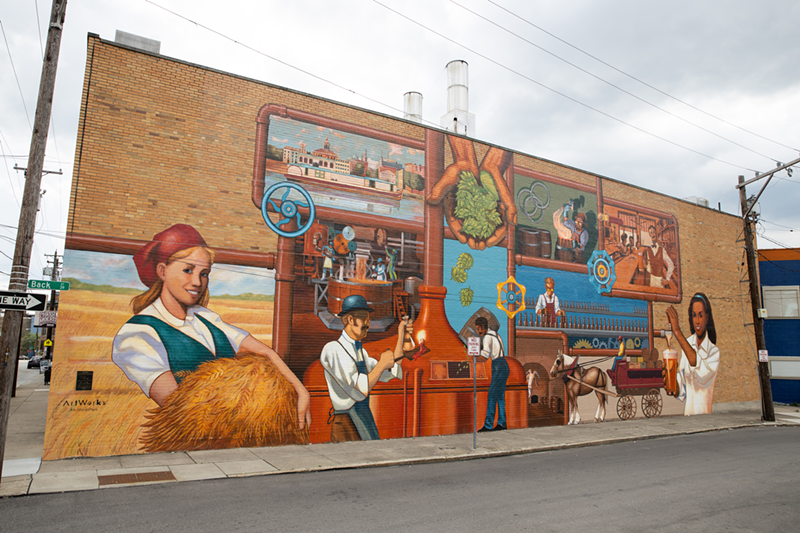
Near-beer, brewed to a mere fraction of the alcoholic content of traditional beer, was the legal alternative brewers could produce during Prohibition. Many “near-beers” in fact had a much higher than advertised ABV, a feeble attempt to circumvent the law. Near-beer was about as popular then as it is now — people just want real beer.
When proper beer was still illegal, a now defunct local brewery, Red Top Brewing Company, sold what were essentially home brew kits under the argument that the raw ingredients were only illegal once they’d fermented to a certain alcoholic level. Bureaucracy at its thirstiest.
“Prohibition is a terrible idea,” says Morgan unsurprisingly. “I think there’s a close parallel between what we did with saloons in the state of Ohio and marijuana today. The Drug War is the longest war in American history and it is the largest failure of any war we’ve been in as a nation. It’s just asinine, counterproductive. We criminalized saloons in Ohio in 1851, we had about 400 of them as a city at that time. Thirty years of criminalization later, we had about 2,000 of them.”
“So, how’d that work?” he adds, rhetorically.
According to Cincinnati Beer many of the aspiring beer magnates in Cincinnati in the mid-1800s were “infinitely forgettable” and there were many failed ventures.
“In a phenomenon that repeats itself in modern times, there are a score of fetal ghosts and stillborns,” the book says. “Today, this lowest layer of the Darwinian brewery pile pops up occasionally on internet lists with scheduled opening dates that come and go without ever pouring a pint.”
If you’ve been in OTR in the past decade, you’ve likely noticed the influx of bars and breweries. There’s the spectre of history repeating itself and seemingly the potential for fallout due to oversaturation. Can we learn from the past to improve the future?
“It’s possible that, as a nation, we’re going to go into a period where we look like some European countries: Every neighborhood in the city can have its own brewery where it’s operating on a neighborhood scale that’s cost effective and making money. That would be fantastic. But it’s unlikely,” Morgan says.
He thinks neighborhood breweries like Woodburn Brewery in Walnut Hills and Brink Brewing Co. in College Hill are working a more localized game plan that is more sustainable than some of the more ambitious ventures.
“We’re reaching a point of saturation it’s not going to sustain,” he says. “If you’ve got a city with 30 different breweries in it and they all want to be the next huge brewery with 25-state distribution, it’s inevitable that a) they’re gonna start killing each other and b) the real threat to any brewery in this city is not other Cincinnati breweries, it’s the big guys. They’re allowing a lot of this to get along, the big guys, and at some point I think the hammer’s going to fall. That’ll be a terrible day.”
Cincinnati is indeed home to more breweries now than can ever be recalled, with an estimated 62 breweries operating in the region, spanning from nano-breweries to full-scale productions. With a rich heritage to honor, many have taken up the tradition of brewing classic English and German recipes, but of course there’s so much innovation in the brewing community that there’s no shortage of alternatives to the tried and true brews of yesteryear.
“That Bohemian Pilsner they’re making at Wiedemann’s is probably the best pilsner I’ve had in my life,” Morgan says. “I don’t think Urban Artifact has any competition in sours, especially that Midwest Fruit Tart niche, I don’t think there’s anyone in America doing that better. Psychopathy at MadTree is the best overall IPA in the city.”
As a man who’s become a local celebrity based on his knowledge and appreciation for beer, it’s natural to wonder what’s in his refrigerator at home. Morgan’s stash is fittingly eclectic.
“I teach Hops & History at (the University of Cincinnati), so there’s always a few beers leftover from class. So my refrigerator always has an eclectic group of stuff,” he says. “I always love this time of year because MadTree does that springtime Rounding Third Red IPA. I like that as a solid seasonal. West Side Brewing does the single best session IPA. I’ve got a collection of Urban Artifact, MadTree, Wooden Cask ... it’s pretty broad.”
What about bock beer? He claims Moerlein makes the best in the city, saying, “It’s good, for bock.”
Though Morgan sounds hopeful about the range of offerings in the area, it’s otherwise a bit jarring to hear a brewery doomsday prophecy from one of Cincinnati’s most knowledgeable beer advocates. But it doesn’t mean we need to shed tears into our beers.
Beer is meant to be consumed fresh, preferably right from the source. If we continue to value its contributions to our happiness and relaxation, it’s inevitably going to be a steadfast companion for generations to come. Beer is a legacy that will continue well past any expiration date.
Morgan is high on the quality of modern beer choices. It’s the quantity he finds concerning.
“America is making the best beer in the world right now and that’s not something you could have ever said previously,” he says. “We’re making it on an unprecedented local level. I wish all these places the best, I hope they all stick around. They won’t, though. It’s gonna pop. We should all drink as many great beers as we can right now.”
Challenge accepted. Prost.
Cincinnati Beer by Michael D. Morgan is available now. For more information or to purchase the book, visit arcadiapublishing.com or cincinnatibeerbook.com.
Cincinnati’s Brewing Heritage Trail
Cincinnati’s Brewing Heritage Trail explores, preserves and celebrates the city’s storied past as a beer-producing capital with a series of guided tours and a free walking trail.
Conceptualized in 2011 and in progress since 2013, the ribbon was recently cut on the first phase, which stretches about three-fourths of a mile between Findlay Market and Grant Park in Over-the-Rhine. “Hop on” the trail at either terminus and follow embedded medallions in the sidewalk to discover historic buildings, brewing sites, public art and more.
Spearheaded by the Brewery District Community Urban Redevelopment Corporation (BDCURC), a nonprofit committed to preserving and redeveloping the Cincinnati Brewery District, the project has received roughly $2 million of its $5 million projected cost so far.
“The whole idea behind the trail is that it’s immersive in more ways than just walking around and looking at some signage — it’s the public art, it’s the guided tours,” says Steven Hampton, BDCURC executive director.
The trail, curated by Michael D. Morgan, will eventually strech two miles, snaking into Pendleton and Mohawk, and include an app with audio tours and augemented reality experiences that will let users look inside underground lagering cellars and former brewing spaces.
Currently, about two dozen signs or so are available to peruse anytime, for free. Every building that was part of brewery is identified in some way, and other stops were selected to tell a part of Cincinnati’s beer-infused historical narrative.
“We really wanted to show the breadth of how beer was a part of almost every story in the city’s history,” says Hampton “Even in this first segment there are stories about immigration, stories about labor conditions, stories about the Civil War and how Germans were involved in that. We really wanted to get a good cross-section of the interesting stories that beer can tell us about Cincinnati.”
A number of guided Brewing Heritage tours are also available to complement the self-guided trail and dig deeper into local beer history. Each tour lasts between 90-minutes and three hours. These tours start at the Moerlein Malt House Taproom and, depending on which tour you book, can delve into the cavernous lagering cellars of the now defunct Schmidt Brothers/Crown Brewery or those of the Jackson Brewery. The "Brunch, Beer & Breweries" tour gives a behind-the-scenes look at Moerlein's brewing operations with a beer tasting and brunch at the brewpub. After eating you'll traverse the walking trail's first phase, leading back to Moerlein for another tasting and a tour of their historic malt cellars.
While there’s still much to do with building out the remainder of the trail — including adding more public art and creating a more robust virtual experience — Hampton is pleased with the progress.
“We wanted something that was iconic, that was unique not only to Cincinnati but also to other places No other city has this,” he says. “It’s something really different.”
For more information about the Cincinnati Brewing Heritage Trail or tour tickets, visit brewingheritagetrail.com.

